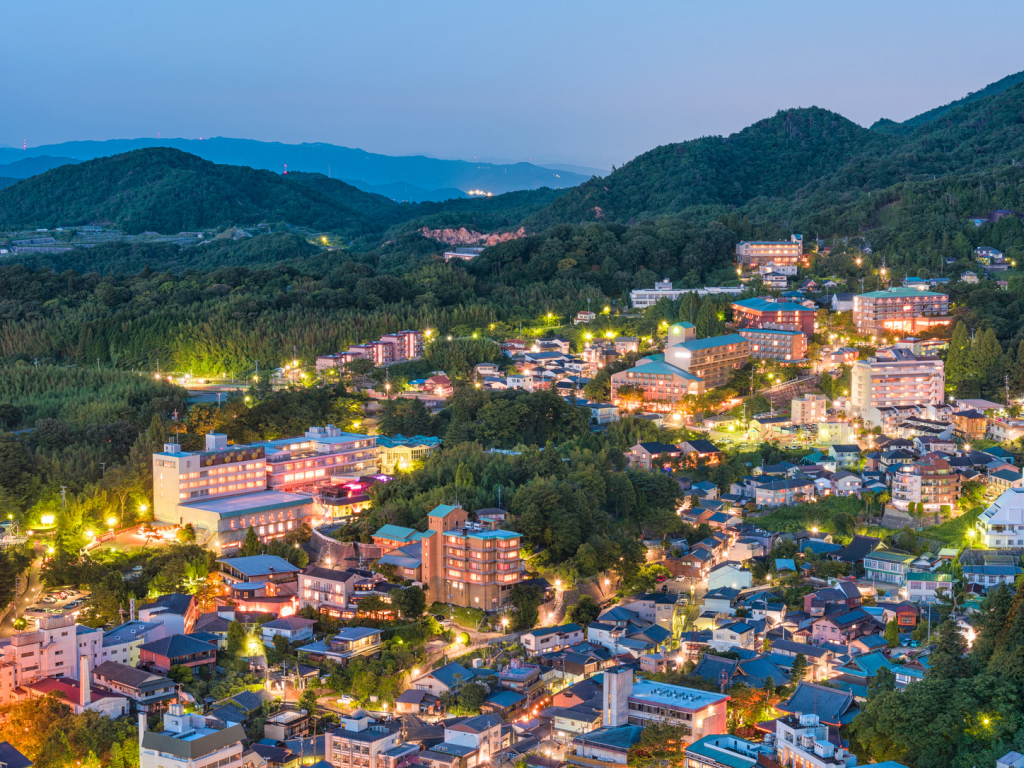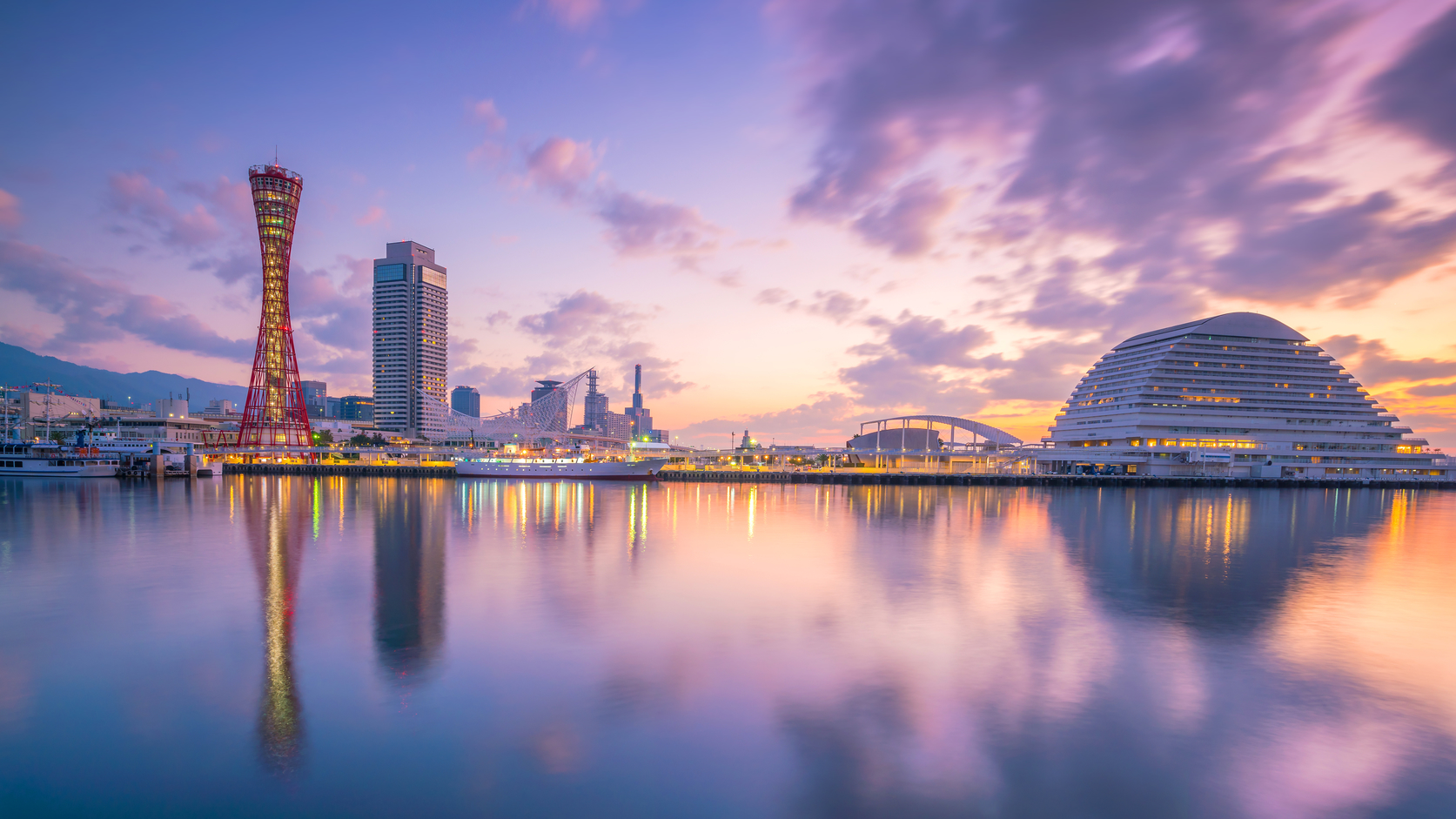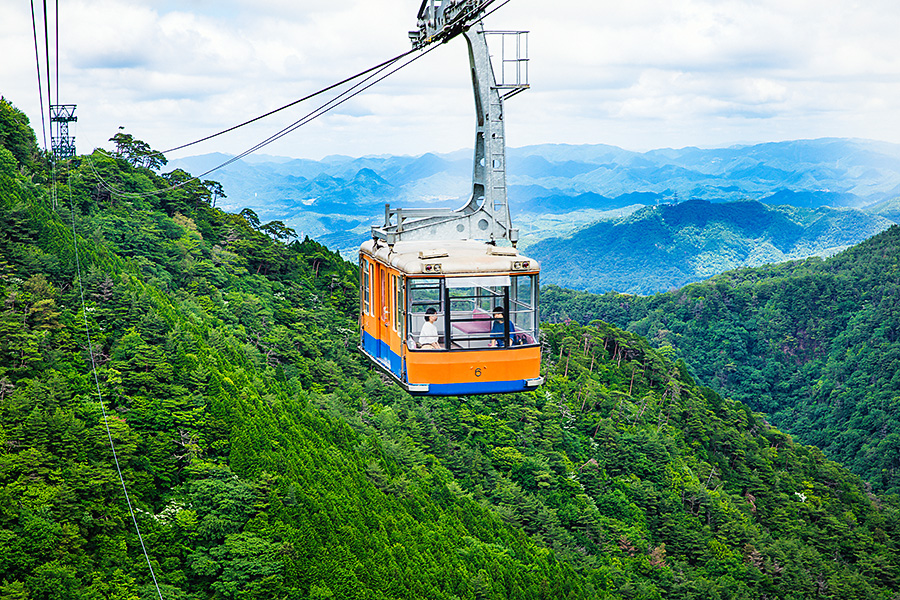Kobe, tucked between Mount Rokko and Osaka Bay, and known as one of Japan’s most cosmopolitan cities due to its fascinating history as an international port, is hard not to love. The port city is well-known for its scenic views of the harbor as well as – you guessed it – Kobe beef (here’s where to eat it). It’s also known for an open and welcoming atmosphere, so sharpen up your Kansai-ben skills and get ready for a bit of small talk with the locals in between all the sightseeing.
DAY 1
To the Top of Mount Rokko
Start your day at Mount Rokko, which is, in fact, a series of mountains that fan out as a backdrop framing the city proper. The cute Rokko Cable Car, which has a long history extending back to 1932, takes you up to the peak of Mount Rokko. There are plenty of mountain sightseeing activities on offer, such as visiting the botanical garden or stopping for a coffee at a garden terrace. But it’s just as pleasurable to sip on a local craft beer and take in the expansive views of the harbor.

Rokko Cable Car
From the peak, you can switch to the Rokko-Arima Ropeway to travel to Arima Onsen (a region that was said to have been discovered by gods, and was oft visited by sitting emperors). To descend toward Arima Onsen, take the Rokko-Arima Ropeway, a 12-minute journey that sends you coasting over the treetops with 360-degree, awe-inspiring views. When we visited, we were lucky to glimpse some of the large outdoor photographic panels from the Mt. Rokko Photographic Garden – an early summer photography exhibition that was being held around the mountain in both indoor and outdoor venues.
Atmospheric Arima
Following the ropeway’s thrillingly steep descent amidst fantastical views of the outlying mountain ranges, you’ll arrive at the charming Arima Onsen. This is one of Japan’s most prestigious and ancient hot springs. It is well known for having two types of hot springs: the kinsen (gold hot spring) and ginsen (silver hot spring). The muddy-colored kinsen is said to be good for moisturizing the skin, while the colorless ginsen helps to relieve muscle fatigue. While here, also look out for Kin no Yu, a famous public bath house located on the corner of Yumotozaka shopping street. Besides the traditional indoor bath house, it also provides a free foot bath outside. Aromatherapy treatments also abound in the town, making it clear that those interested in overall healthful living will find Arima Onsen to be an ideal travel destination.
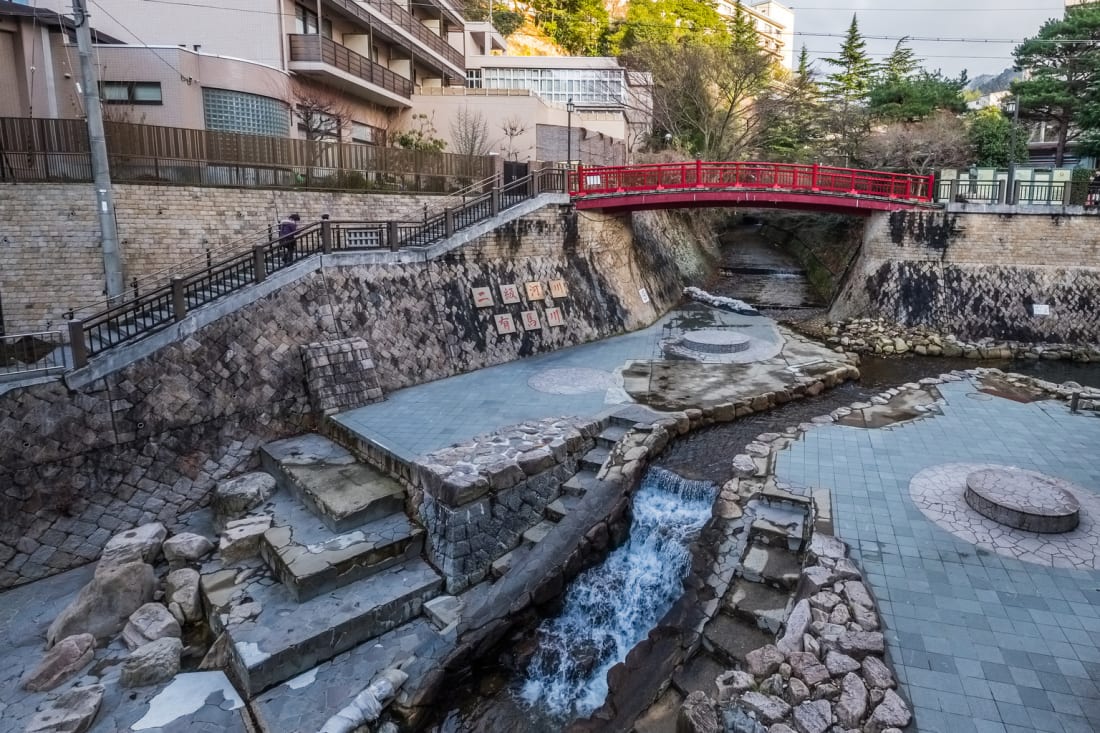
DAY 2
A Touch of History
Take a five-minute walk from Shin-Kobe Station to Kobe Nunobiki Ropeway, which will take you to the very pretty Nunobiki Herb Garden. Back down on street level, walk about 15 minutes to arrive at the historical district of Kitano-cho. Here you’ll discover what Kobe life was like during the 19th century when foreigners settled in the area after the opening of the port of Kobe. Several of the well-preserved houses are open for exhibition. After exploring the narrow streets and plaza of the vicinity, take a short break at Starbucks Kitano Ijinkan. The two-story wooden structure used to serve as the Kitano Monogatari-kan, a residential house for Americans during the Meiji period, but is now repurposed as a café.
An Ancient Shrine
As you make your way downtown, you’ll immediately notice how the ambiance changes. The urban landscape of shops, pubs and cafés surrounds the district of Sannomiya. But within the heart of this lively sector you’ll also find what is considered by many to be one of the oldest shrines in Japan. Entering Ikuta Shrine, you’ll be greeted by its bright orange-lacquered torii gate. After trying out the water purification ritual known as temizu (English instructions are available), head to the main shrine (entrance is free). Also, be sure to explore behind the main shrine – it’s a wonderfully peaceful place offering respite from the busy streets.
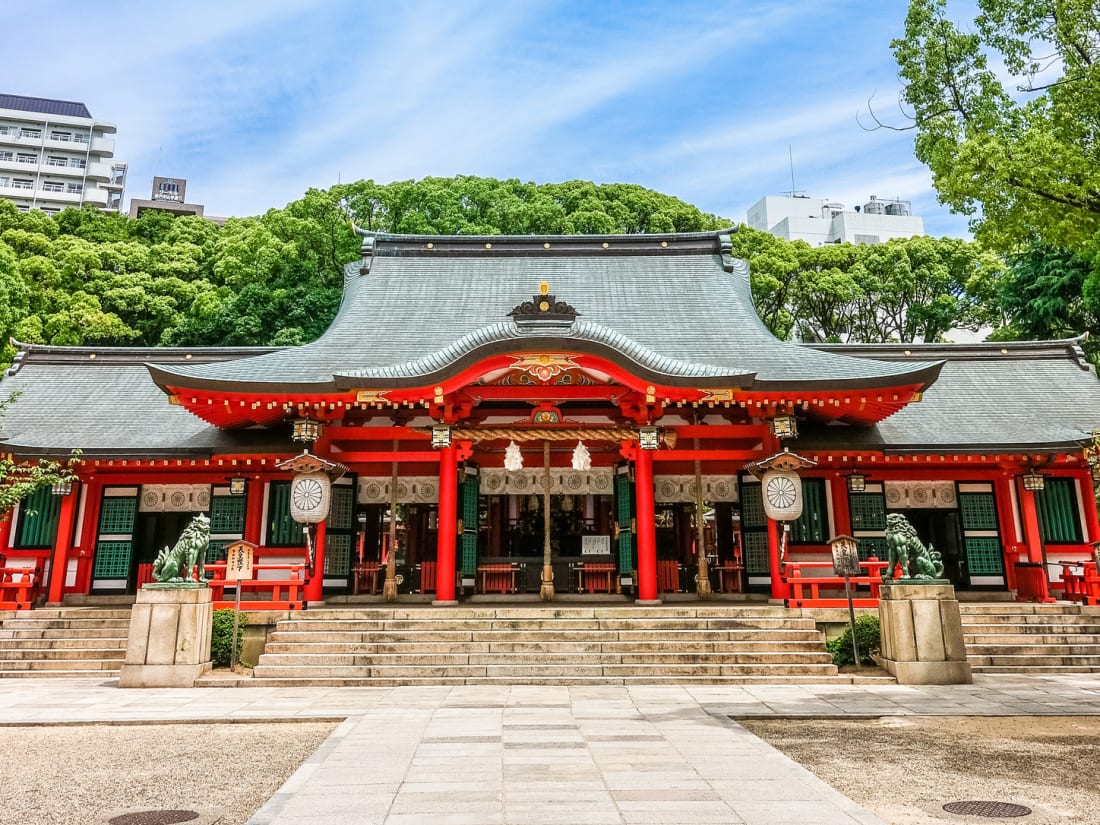
Ikuta Shrine
Port Ambling
Your adventure in Kobe wouldn’t be complete without a waterfront walk. The city’s Japanese maritime port perfectly represents modern-day Kobe and is best known for the Kobe Port Tower. If you wait until dusk, you’ll witness the area come alive with lights, and experience one of the most picturesque scenes available in Kobe city. Be sure to pass by Meriken Park, where a memorial to the 1995 Great Hanshin Earthquake victims stands. It might feel like a somber sight but the memorial is also symbolic of how the city resurrected itself after the disaster.
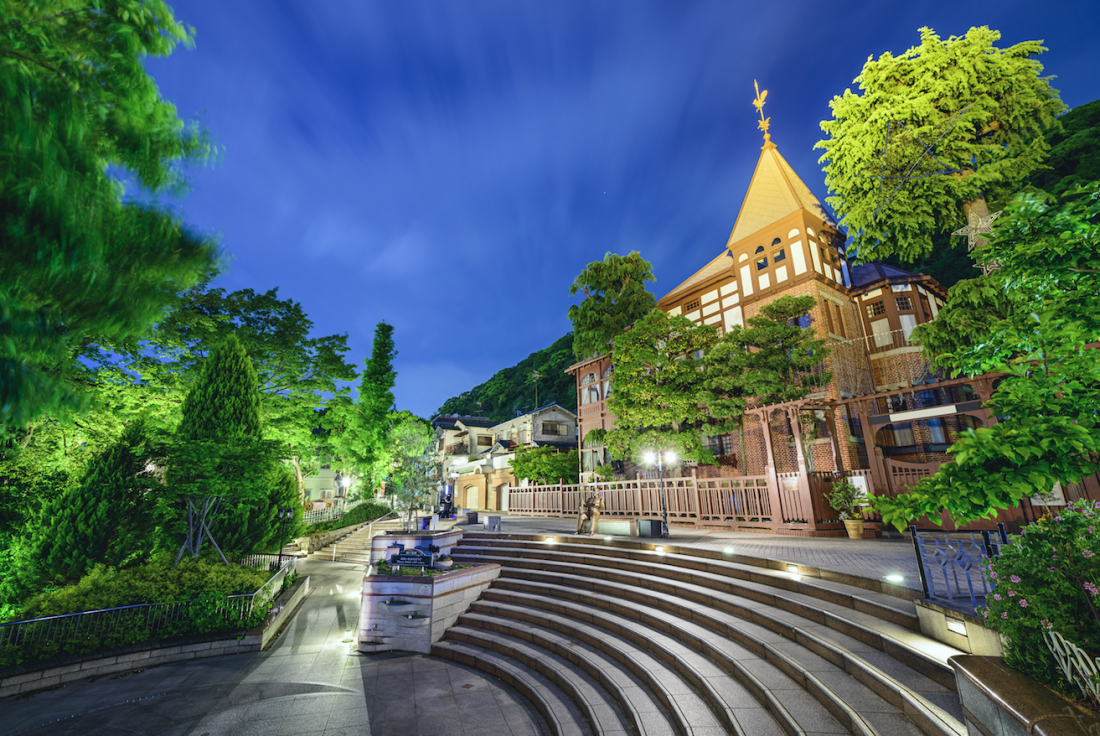
Kitano-cho District
Four More Reasons to Visit Kobe
KOBE JAZZ STREET FESTIVAL
Kobe has earned a reputation as a Kobe has earned a reputation as a city of jazz – apparently the first Japanese jazz band was formed here in 1923. The Kobe Jazz Street festival, which is considered to be one of the biggest traditional and mainstream jazz festivals in Japan, is held every October.
THE SAKE
Arguably among the nation’s finest, so you shouldn’t leave without at least tasting the sake if not touring a brewery. The Nada district of Kobe is known for its breweries, with a large portion of the Japanese sake produced here.
FAMOUS DESIGN SPOTS
Kobe boasts a UNESCO designation as a Creative City of Design. Look out for Rokko Meets Art, an exhibiton of modern art at the summit of Mt. Rokko (www.rokkosan.com/art2018). And stop by the Hyogo Prefectural Museum (www.artm.pref.hyogo.jp/eng).
RUGBY WORLD CUP 2019
Set to be held in Japan from September 20 to November 2, 2019, with Kobe being one of
the host cities.
For more information about Kobe sightseeing, accommodation and transportation, go to plus.feel-kobe.jp
Words by Kimberly Hughes and Minechika Endo
Sponsored Post

